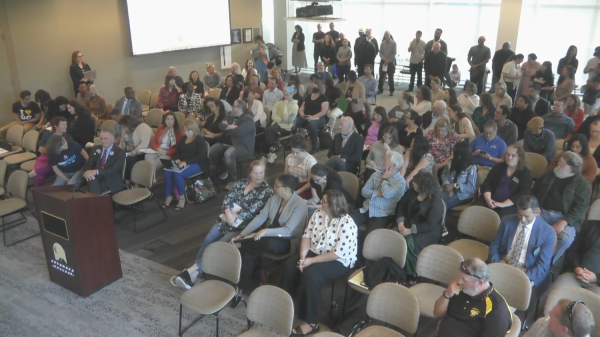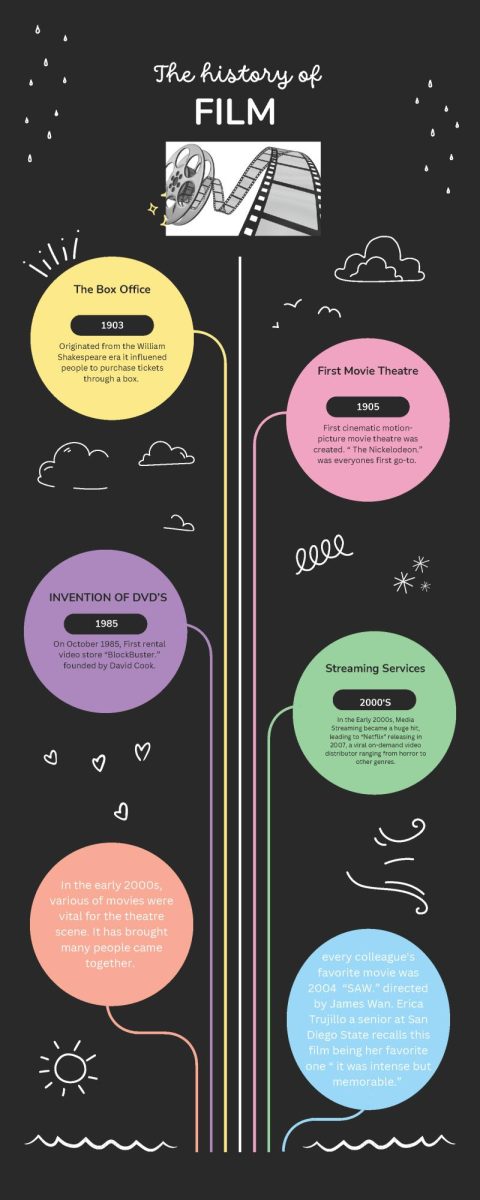WASHINGTON, D.C (Press Release)–The Obama administration on Thursday released a broad set of rules to strengthen federal student aid programs at for-profit, nonprofit and public institutions by protecting students from aggressive or misleading recruiting practices, providing consumers with better information about the effectiveness of career college and training programs, and ensuring that only eligible students or programs receive aid.
“These new rules will help ensure that students are getting from schools what they pay for: solid preparation for a good job,” Secretary of Education Arne Duncan said.
Students at for-profit institutions represent 11 percent of all higher education students, 26 percent of all student loans and 43 percent of all loan defaulters. The median federal student loan debt carried by students earning associate degrees at for-profit institutions was $14,000, while the majority of students at community colleges do not borrow. More than a quarter of for-profit institutions receive 80 percent of their revenues from taxpayer financed federal student aid.
This rapid growth of enrollment, debt load, and default rates at for-profit institutions in recent years prompted the Obama administration to embark on an 18-month negotiation with the higher education community over new regulations, which was required by Congress. During the negotiation, the Education Department worked with stakeholders to develop a set of proposals around 14 specific issues (outlined below) that strengthen the integrity of the federal student aid program and ensure that taxpayer funds are used appropriately. The regulations, published in two parts, follow that year-long process and will go into effect on July 1, 2011. They address 13 of the 14 issues in their entirety, and partially address the 14th issue, which involves the definition of “gainful employment.”
The Department received over 1,200 comments on the proposed regulations published today. The comments were carefully considered and led to 82 thoughtful revisions in the proposal including: giving institutions additional time to put in place systems required by the regulations; clarifying institutions’ flexibility in the way they define a credit hour; and clarifying exemptions for religious institutions.
“I’d like to thank everyone who worked with the Department during the public comment period. We made thoughtful changes based on the comments we received. These changes help us fashion the best regulation possible to protect the interests of students and taxpayers,” Secretary Duncan said.
After receiving over 90,000 comments during the public comment period on the Department’s gainful employment proposals dealing with a program’s eligibility to receive federal student aid, the Department announced plans in September to change the publication date of these final regulations from Nov. 1 to early 2011. This will still allow the Department to publish final regulations in time for them to go into effect on or around July 1, 2012, as originally planned. The Department is taking additional time to hold several meetings with interested parties over the coming weeks, as well as public hearings on Nov. 4 and Nov. 5. These meetings will give people the opportunity to clarify the comments they’ve submitted and respond to questions from Department officials.
“We continue to be thoughtful as we move forward with finalizing new gainful employment eligibility rules,” said Secretary Duncan said. “We’re taking additional time to analyze all the feedback we’ve received to help us strike the right balance between holding these programs accountable to protect students and taxpayers from abuse and making sure we keep whole those programs that are doing a good job,” Duncan continued.
SUMMARY OF NEW FINAL REGULATIONS ON PROGRAM INTEGRITY
Holding Programs Accountable for Preparing Students for Gainful Employment
Graduation Rate and Job Placement Disclosures: This rule would require proprietary institutions of higher education and postsecondary vocational institutions to provide prospective students with each eligible program’s graduation and job placement rates, and require that colleges provide the Department with information that will allow the determination of student debt levels and incomes after program completion.
Approval of Additional Programs: The Department’s proposed regulations on gainful employment would create a two-part measurement to determine a program’s ability to participate in federal student aid programs. The proposed measurement is based on loan repayment rates and debt to income ratios and requires at a least four years of repayment history, and three years of employment history to properly calculate the data.
If institutions that have a poor track record in preparing students for gainful employment create a large number of new programs, or restructure existing programs, this could allow them to game the system and circumvent the proposed regulations in advance of their publication because the Department would lack sufficient data to measure their effectiveness for several years. To prevent potential abuse, the Department is proposing that institutions give notice when introducing a new program. If the Department has concerns, institutions will be asked to formally apply for new program approval based on several factors including whether the number of additional educational programs being added is inconsistent with the institution’s historic program offerings, growth, and operations. The Department expects that very few new programs will be subject to this type of approval.
Protecting consumers from misleading or overly aggressive recruiting practices, and clarifying state oversight responsibilities. The regulation strengthens three current requirements that are designed to protect students and taxpayers:
Misrepresentation: During public hearings and negotiated rulemaking sessions, the Department heard numerous complaints from students enrolled in programs in which they felt misled on what was and was not being offered, the way programs could be paid for, and their job prospects upon completion. To protect consumers, the regulations strengthen the Department’s authority to take action against institutions engaging in deceptive advertising, marketing, and sales practices.
Incentive Compensation: The Department heard reports of aggressive recruiting practices resulting in students being encouraged to take out loans they could not afford or enroll in programs where they were either unqualified or could not succeed. Though current laws prohibit schools from compensating admissions recruiters based solely on success in securing student enrollment, provisions known as “safe harbors” allowed this questionable practice. The regulations remove all the “safe harbor” provisions.
State Authorization: State authorization is required by the Higher Education Act for a postsecondary institution to participate in federal student aid and other federal funding programs. Some states have failed to establish how they approve and monitor postsecondary programs. The regulations clarify, for federal program purposes, the minimum a state must do to meet this important responsibility to protect students, including for schools that offer distance or correspondence education.
Ensuring that only eligible students receive federal funds. Generally students are eligible for aid only if they have a high school diploma or pass an “ability to benefit” test, and only if their academic standing is satisfactory. Today’s final rule will help more qualified students receive aid while strengthening protections against fraud:
High School Diploma: The proliferation of high school diploma mills has called the validity of some secondary school credentials into question. The regulation requires institutions to develop and follow procedures to evaluate the validity of a student’s high school diploma if the institution or the Secretary has reason to believe that the diploma is not valid or was not obtained from an entity that provides secondary school education.
College Credits: The regulations extend eligibility for federal student aid to students without high school diplomas after they successfully complete six credits of college work, or the equivalent amount of coursework. This implements a provision that was included in the Higher Education Opportunity Act of 2008.
Ability To Benefit (ATB): The Department is responsible for approving ATB test materials developed by testing companies. To improve its oversight of how ATB tests are administered, the regulation revises test approval procedures and criteria, including those related to tests for speakers of other languages and persons with disabilities.
Satisfactory Academic Progress: Every institution is required to have a policy to ensure that all of its students are achieving satisfactory academic progress. Audits and institutional program reviews have uncovered policies that provide federal financial aid to students who do not meet institutions’ academic standards. The regulations require a structured and consistent approach to evaluating a student’s academic work, while continuing to provide flexibility to institutions in establishing their policies.
Verification: Each year, millions of students are required to confirm the information on their Free Application for Federal Student Aid (FAFSA). The regulation reforms this process to reduce burdens on students and colleges, better identify fraud, and take advantage of the increased use of the FAFSA simplification efforts that have increased the use of Internal Revenue Service data. To allow more time for institutions to prepare, the effective date of this provision will be delayed until July 1, 2012.
Clarifying the courses that are eligible for federal aid, and the amount of aid that is appropriate.
Credit Hour: Credit hours are the metric used by the Department to measure eligibility for federal funding. Currently there is no standard definition for a credit hour, which has led to reports of institutions awarding more credits — and awarding students more college aid — than deserved. To address this issue, the regulations define a credit hour and establish procedures for accrediting agencies to determine whether an institution’s assignment of a credit hour is acceptable. Recognizing that “seat time” is not the goal, the final rule allows for equivalent measurement of learning outcomes. It also clarifies that a credit hour is defined solely for federal program purposes, allowing institutions to set their own standards for academic purposes.
Written Arrangement: A postsecondary institution is allowed to deliver a portion of another institution’s educational program through a written arrangement. Problems have surfaced when the two institutions are controlled by the same entity or do not meet certain participation requirements. The regulation limits the amount of a program that can be provided by a school in an arrangement, prohibits arrangements with ineligible institutions that have had their federal student aid participation revoked, and expands information that an institution must disclose to a student enrolled in a program affected by the arrangement.
Retaking Coursework: Currently students who repeat coursework generally cannot have the course they repeat count towards the calculation of a full-time course load in a term-based program if previously passed. The regulations expand the definition of full-time student by allowing such courses to count in most cases for one repetition without regard to whether the student previously passed it.
Determining When a Student Has Withdrawn: Currently, loopholes complicate the measure of how much federal funding must be paid back if a student drops out of a program measured in credit hours. The regulations eliminate loopholes and clarify the calculation of returning federal funds to the Department by defining when a student is considered to have withdrawn from a program. It also clarifies the circumstances under which an institution is required to take attendance for the purpose of calculating a return of federal funds.
Disbursing Federal Student Aid Funds: As it stands now, many students are not receiving their federal student aid funds in enough time to obtain their books and before the start of school. The regulations ensure that the neediest students — Pell grant recipients — can acquire books and supplies by the seventh day of their payment period.
Gainful Employment: In order to provide students and families with better information about the value of programs subject to the requirement they lead to gainful employment in recognized occupations, institutions are required to report information about students who start and complete a program. This information includes costs, debt levels, graduation rates, and placement rates.
Additional information on the Department’s negotiated rulemaking efforts may be found on the webl.
*
Preceding was provided by the U.S. Department of Education via USA News Network 4
















